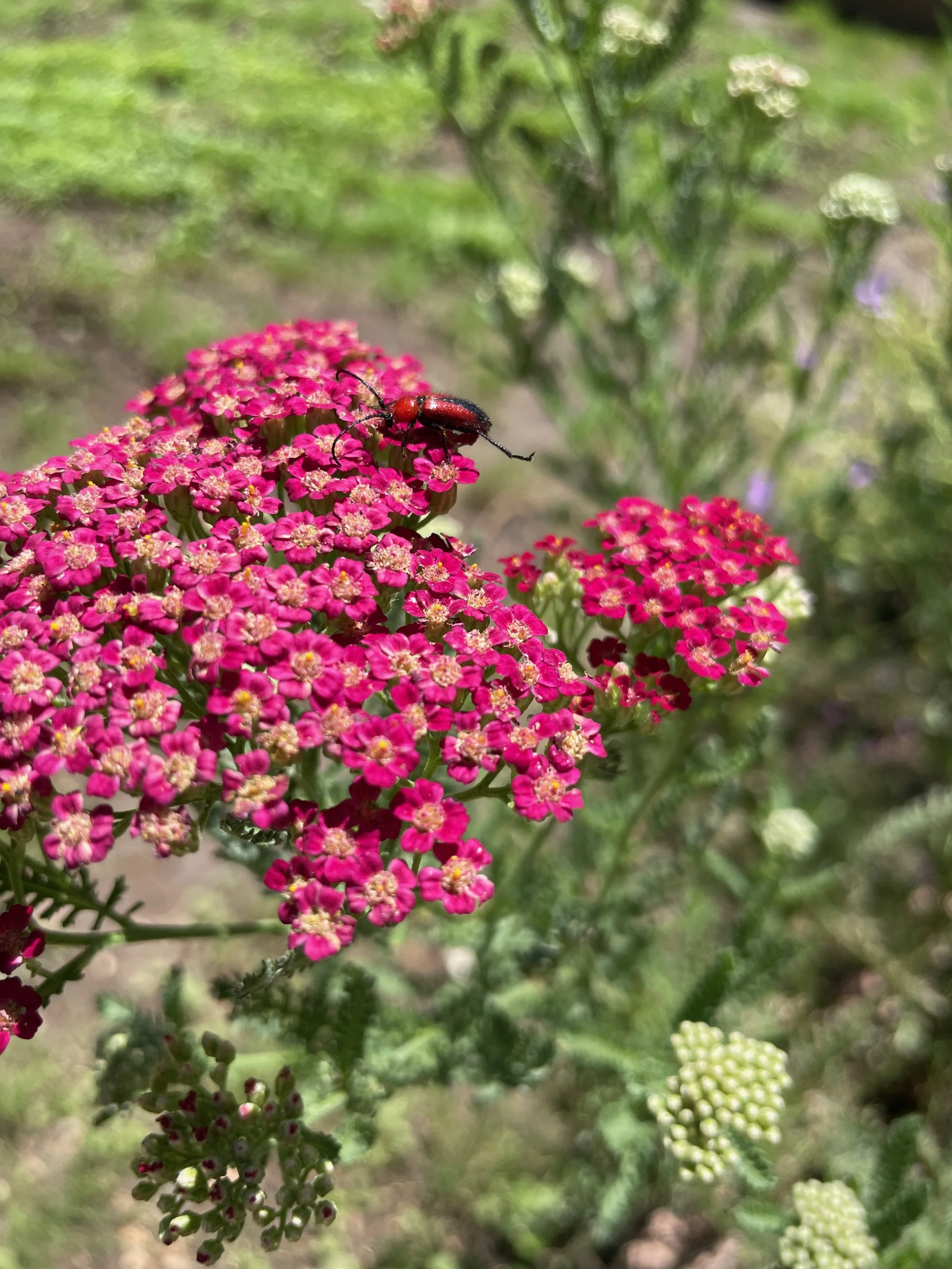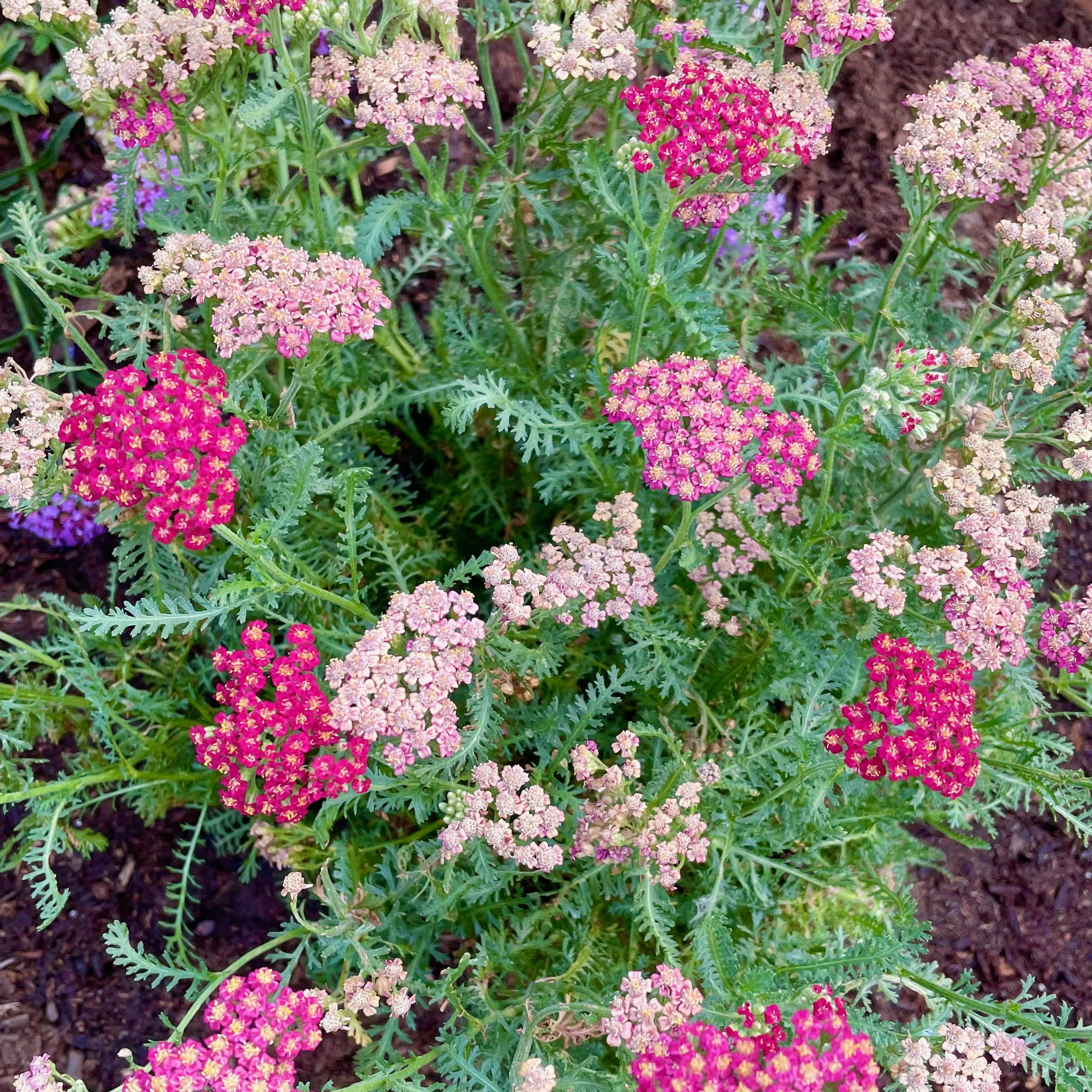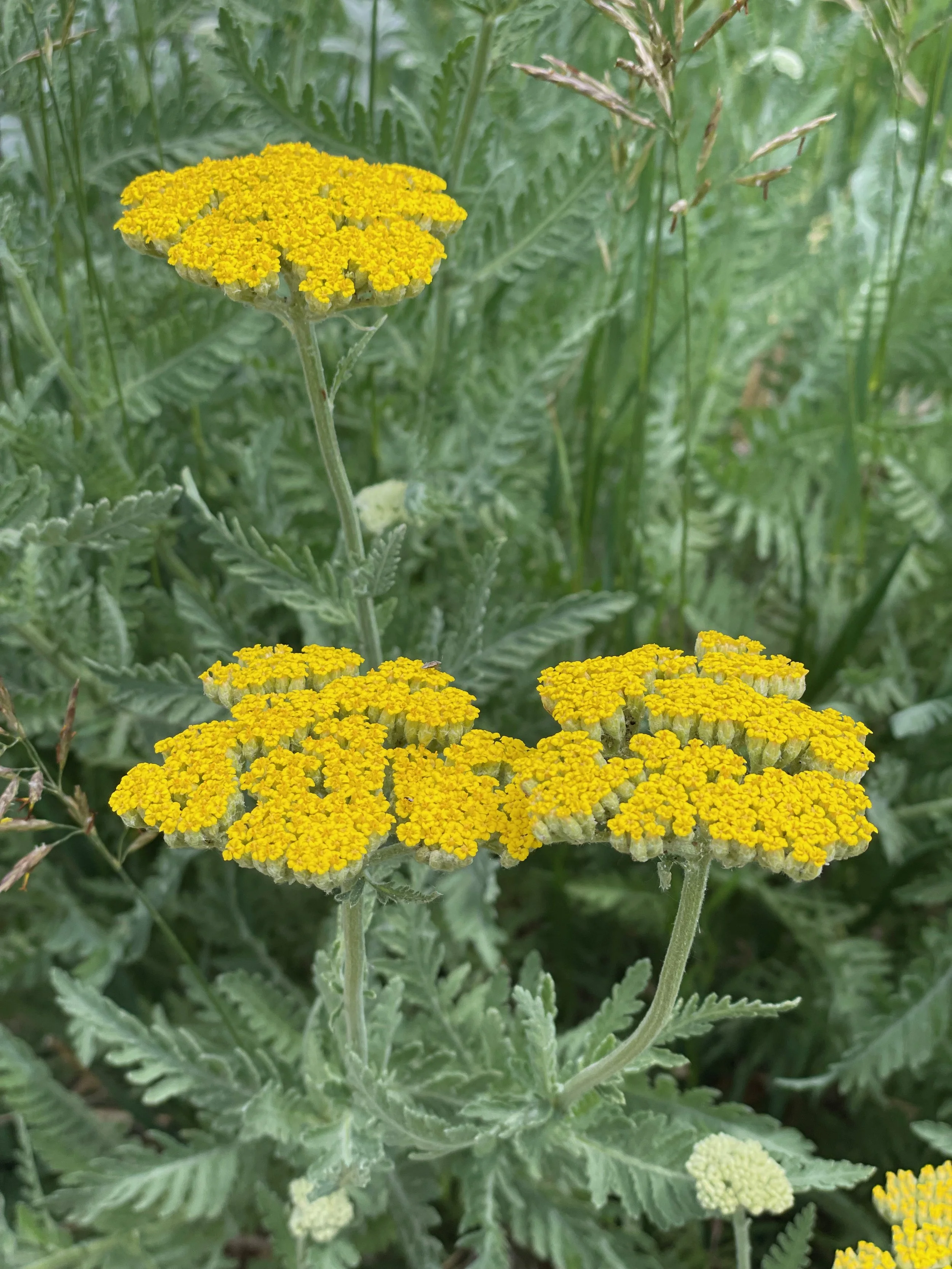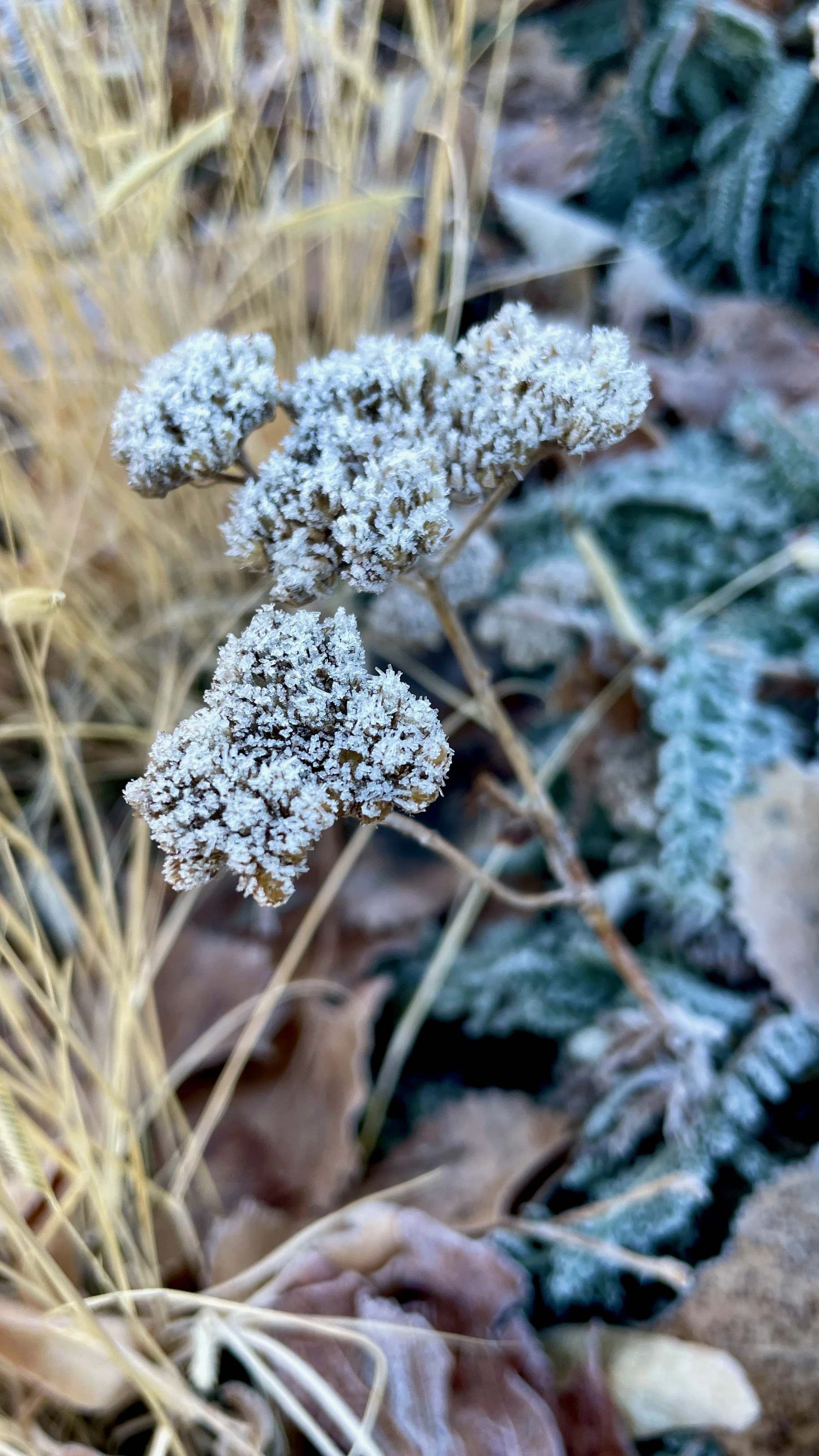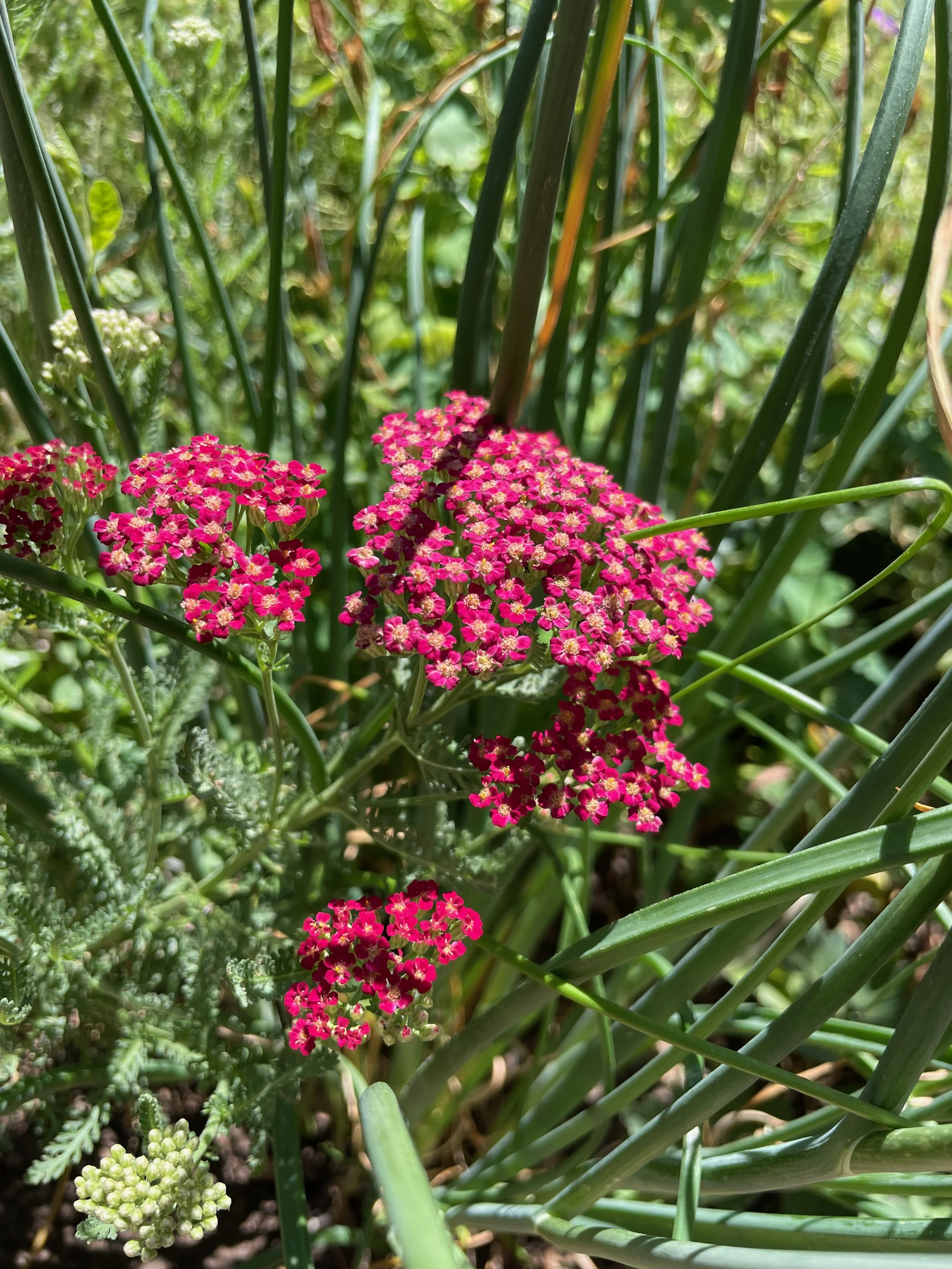Plant This!
Achillea
Yarrow, Achillea millefolium, Deserves a Spot in your Garden
I spent the early months of 2023 choosing plants for the Wildlife Garden. What an amazing experience! I had just finished taking Kelly D. Norris' New Naturalism class, and I wanted to put all of my new knowledge to work in one place. The Wildlife Garden is an L-shaped space in the front of our house – about 1200 sq feet total. The idea was to create a wild space that then bumps up into a clipped lawn – a stark contrast between the wildness and the tame. But I wanted a similar vocabulary in both places – and every plant had to be waterwise and pollinator friendly.
Enter Achillea millefolium, commonly known as yarrow.
Planting Achillea millefolium is akin to spreading out a bee buffet. This indigenous North American plant is a veritable feast for native bees. And it’s also one of those plants that just does its thing without any real work or care. It is at home in a cottage garden, a modern garden, a wildlife garden. My garden.
In the Wildlife Garden I have planted Achillea x "Moonshine" (and there is disagreement as to whether it is a cross of the North American native Achillea millefolium or not) as well as Achillea millefolium 'Paprika' and Achillea millefolium 'Balvinred' PP#25618. It runs amok in all the right ways – a riot of color with the yellow Moonshine singing out against the purples of the Nepeta and Salvia Ultra Violet. The soil in the Wildlife Garden is terrible – dry clay with very little organic matter. The Achillea is thriving. Additionally, the area where the Achillea is planted is a slope which erodes away with every snowmelt. But that erosion has dwindled as the yarrow has established. Those plants are digging in and holding on tight – exactly what I needed!
Achillea millefolium is native to most of the North American continent. There are also varieties of yarrow, as this plant is commonly known, that are not native to North America. And many of the cultivars available in nurseries are crosses between the native species and varieties from other parts of the world.
Remember how I described the Wildlife Garden as "a wild space that bumps into a clipped lawn?" Well, Achillea millefolium can even be used as a low-water lawn replacement! So, last fall I seeded a small area closer to the house with a seed mix that includes Achillea millefolium. It came up easily in the fall, and I'm excited to watch it green up and truly get established this spring and summer. I will mow it to keep it somewhat short, but I could also just let it grow and bloom all summer. I like having options!
The straight, native varieties are generally white or pink when they bloom. Sometimes they have multicolored blooms, indicating a variety that has crossed with another. But you can find yarrow in shades of yellow, dark pink, and white.
The Wildlife Garden
Before & After
Personally, I love yarrow in a big bed. It is colorful, it blooms through the hottest part of the summer, and it has beautiful texture and dimension with lacy leaves and a silvery cast. In the wildlife garden it puts on a huge show in June and July and then again in September and October. Last year, I didn’t cut it back soon enough, so this year I will be sure to cut it back when it is done blooming to get another really good flush of flowers. It can be cut back all the way to the ground, and then will bloom at least one more time, and possibly even two depending on where you are.
Yarrow has been used to treat fevers and pain for centuries, and for people who enjoy dried arrangements, it can be a foundational plant.
Here in Colorado it is so dry that Achillea millefolium doesn’t tend to flop. But if it’s planted in soil that is too rich or too wet, it will flop. You may need to support it. But that’s part of why I included so much of it in the Wildlife Garden. I have very poor soil. It is very hot and the front border of the wildlife garden gets a lot of reflected heat from the street and the sidewalk. The yarrow is incredibly happy there! It is one of the first plants to emerge in the spring, and it is one of the last plants to give it up in the winter. I leave the seed heads on all winter long, and they provide winter interest and hold the snow. In the spring, I will cut them back and chop and drop. Or compost them.
Yarrow is fairly easy to grow from seed. You can just sprinkle the seed in the bed where you are hoping to grow yarrow, or start it in seed trays. I have had success with both methods!
My favorite thing about yarrow, though, is that it is completely covered in pollinating insects from early morning until late into the night. Its wide, flat, umbellifer flowers are so inviting for native bees, hover flies, butterflies and moths. Hummingbird moths in particular seem drawn to it in my garden, but I can sit in the Wildlife Garden on a sunny summer morning and the whole garden literally buzzes and hums – covered in insect life. And Achillea is a big part of the buffet that keeps them coming back day after day.
Happy Gardening!
Angela


